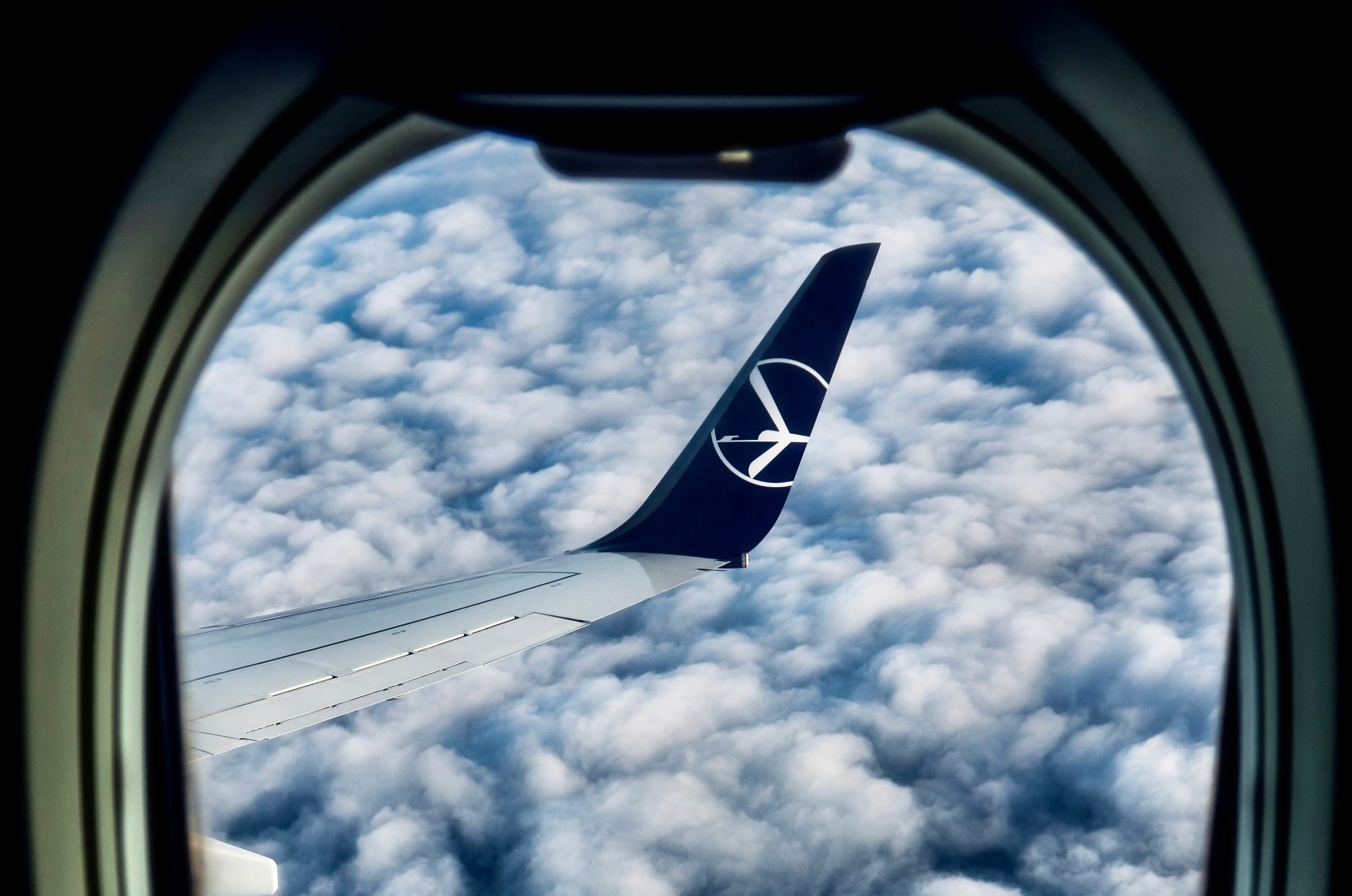Winglets — what are they, and what is their role?
🕗 3 minutes | November 2, 2025 | Text Kamil Wrzosek (opens in a new tab)

When travelling on board our Embraer or Boeing 737s and observing the spectacular views out of the window, the question that comes to mind is what are those perpendicular wing tips with our crane logo? Winglets are an integral part of modern commercial aircraft. The fact that you see them on the wing tips may seem like nothing special to you. Nevertheless, winglets perform a critical function that affects the excellence and range of flights. Find out more about what a winglet is by reading our article.
What is a winglet?
If you are wondering what a winglet is, you are certainly not alone. Winglets are the tips or wing tips of an aircraft's wings that reduce the induced drag of flight and thus reduce fuel consumption, among other things. What does this mean? In simplest terms, a winglet is an aerodynamic wing angled at the end of an aircraft wing. The inventor of winglets was Richard Whitcomb, an American aeronautical engineer working for NASA.

What is the function of winglets?
Did you know that the vast majority of the latest passenger aircraft are fitted with a winglet at the end of the wing? If you are wondering why winglets are so important, we rush to answer!
Winglets are undoubtedly a powerful force in the world of aviation, the introduction of which has brought about many positive changes with the main aim of improving aircraft performance. Winglets reduce aerodynamic drag, and for an aircraft that travels at breakneck speeds, at high altitudes, more drag means reduced performance and increased fuel burn.
What are the greatest advantages of winglets?
- Winglets increase the range of the aircraft.
- Winglets have a major impact on improving fuel efficiency (reduced fuel consumption), which translates into lower aircraft operating expenses and lower carbon emissions.

What principle do winglets operate on?
Winglets help disperse the induced vortices that form at the wing tips of an aircraft. Air with higher pressure from below the wing flows around the tip to the upper surface, where lower pressure prevails. This movement creates a vortex that generates additional resistance—induced drag.
As a result, winglets reduce these wing tip vortices, which helps lower aerodynamic drag. This directly affects fuel consumption—it is estimated that winglets can reduce fuel burn by 3–5% on flights of 1,000 miles (ca. 1,609 km) or more.
However, fuel efficiency is not the only reason airlines incorporate curved wing tips into aircraft designs. Winglets improve safety by minimizing turbulence caused by these vortices, allowing aircraft to fly closer together while maintaining safe separation.

The History of Winglets in Aviation
The use of winglets began to increase systematically in the 1980s. Today, they are not only a standard feature in modern aircraft, but also a key element in the design of new airplanes. A prime example of innovation is the Split Scimitar Winglets on the Boeing 737 MAX 8.
Fully integrated into the aircraft structure and made from carbon fibre or composite materials, winglets exemplify technological advancement that benefits not only cost savings but also environmental sustainability and flight safety.

Summary
A winglet is a distinctive aerodynamic feature that plays a critical role in aircraft performance. By reducing air resistance, it enhances fuel efficiency and overall operational effectiveness. While the economic benefits of winglets are significant for airlines, these innovative wing tip designs also contribute to greater air safety and environmental protection.